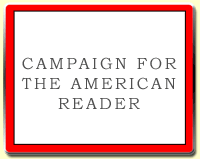 Dimock argues that "Hemingway is a very good example of someone who can show us the rest of the world, because he has travelled so widely and because he is on the minds of so many people. He really is the American author."
Dimock argues that "Hemingway is a very good example of someone who can show us the rest of the world, because he has travelled so widely and because he is on the minds of so many people. He really is the American author."With Jane Rudloff at The Browser, she discussed five top books on Hemingway in Paris, including:
The Paris WifeRead about the other books Dimock tagged at The Browser.
by Paula Mclain
...[Y]ou have chosen The Paris Wife by Paula McLain, which is about Hemingway's first wife Hadley Richardson.
This book is told in the first person, in the voice of Hadley. In that way it's a good complement to Monique Truong's [The Book of Salt], which is told in the voice of the cook. Paula McLain did a good job in terms of historical research, and in fleshing out Hadley's psychology.
How close to reality do you think the book gets?
I think it is quite close. It's interesting to cross-reference this book with the two Hemingway books we discussed earlier, because they cover much of the same terrain. McLain has stuck close to those sources and repeats some of Hemingway's lines, such as the one about writing one true sentence. What is more intensely imagined in this novel is the long drawn-out breakup, with Hemingway slowly drifting away from Hadley and going over to Pauline. That is much more shadowy in A Moveable Feast. There are just a few references to Pauline, and then the apology to Hadley. There isn't much detail about the breakup itself.
But in The Paris Wife you see in vivid detail how Pauline was physically there, with both of them, while the breakup was going on, and how Hadley finally drifted into asking for a divorce. It was very painful, because Pauline insisted during all that time that she was Hadley's friend as well. I'm persuaded by that imagined sequence, although we will never know exactly what happened, and whether Hemingway was as passive as is suggested in this book. But his unwillingness to make any decision seems right, as well as his strong tie to Hadley up to the very end.
The book is a good corrective to the image Hemingway liked to portray of himself as a supreme writer who knew exactly what he was doing, always on top of things. It is also agood portrait of Hadley, and shows her as lacking in ruthlessness – someone who wouldn't fight to keep her man at all costs. That is what makes her so attractive to Hemingway to begin with.
How do you think their time in Paris shaped Hemingway and Stein as writers?
There were all these different writers in Paris, like Joyce and Pound, so they were aware of what other people were doing. That was a tremendous spur, especially to Hemingway. There was also experimentation in the visual arts. Gertrude Stein, in many ways, was trying to produce in language what Picasso and Matisse were trying to do structurally in painting. Hemingway would also write, and then look at paintings by Cezanne and others. James Mellow, one of Hemingway’s biographers, thinks he was trying to do with words what Cezanne had already done with brush strokes. So I would say that both the practice and the personalities of other writers, and the challenge coming from the art world, combined to produce Hemingway and Stein’s writings.
See--The Page 69 Test: The Paris Wife.
--Marshal Zeringue



